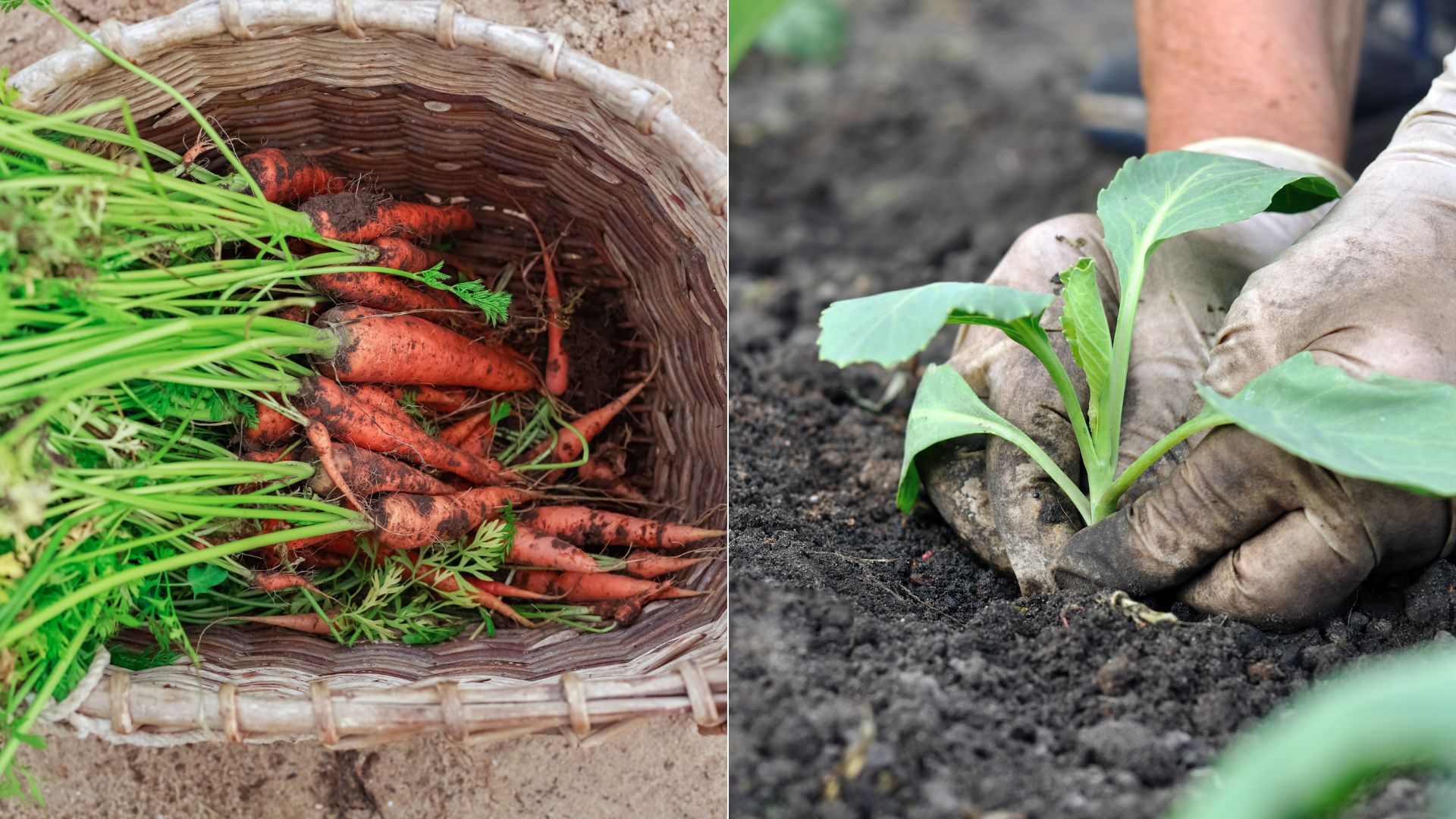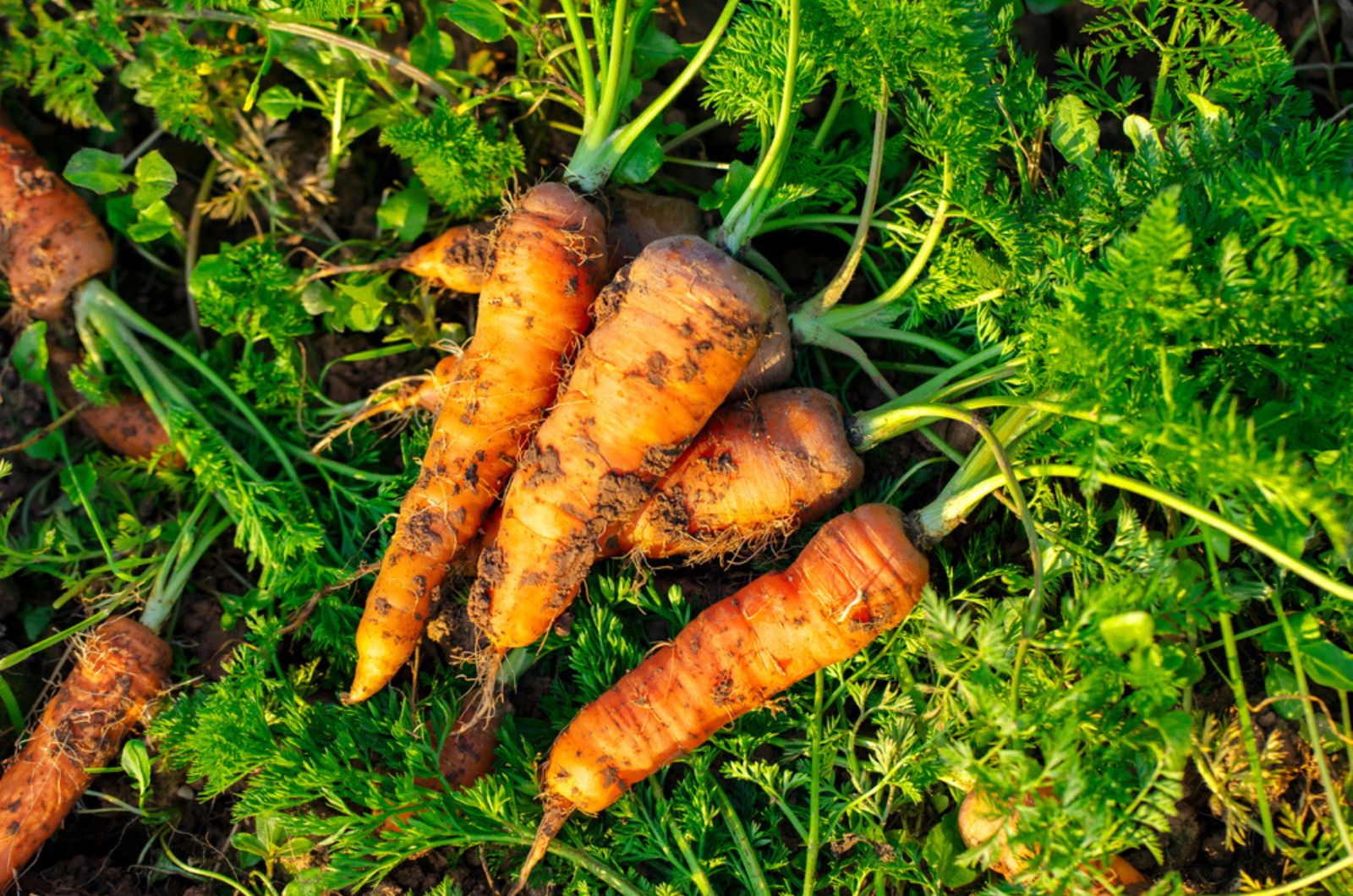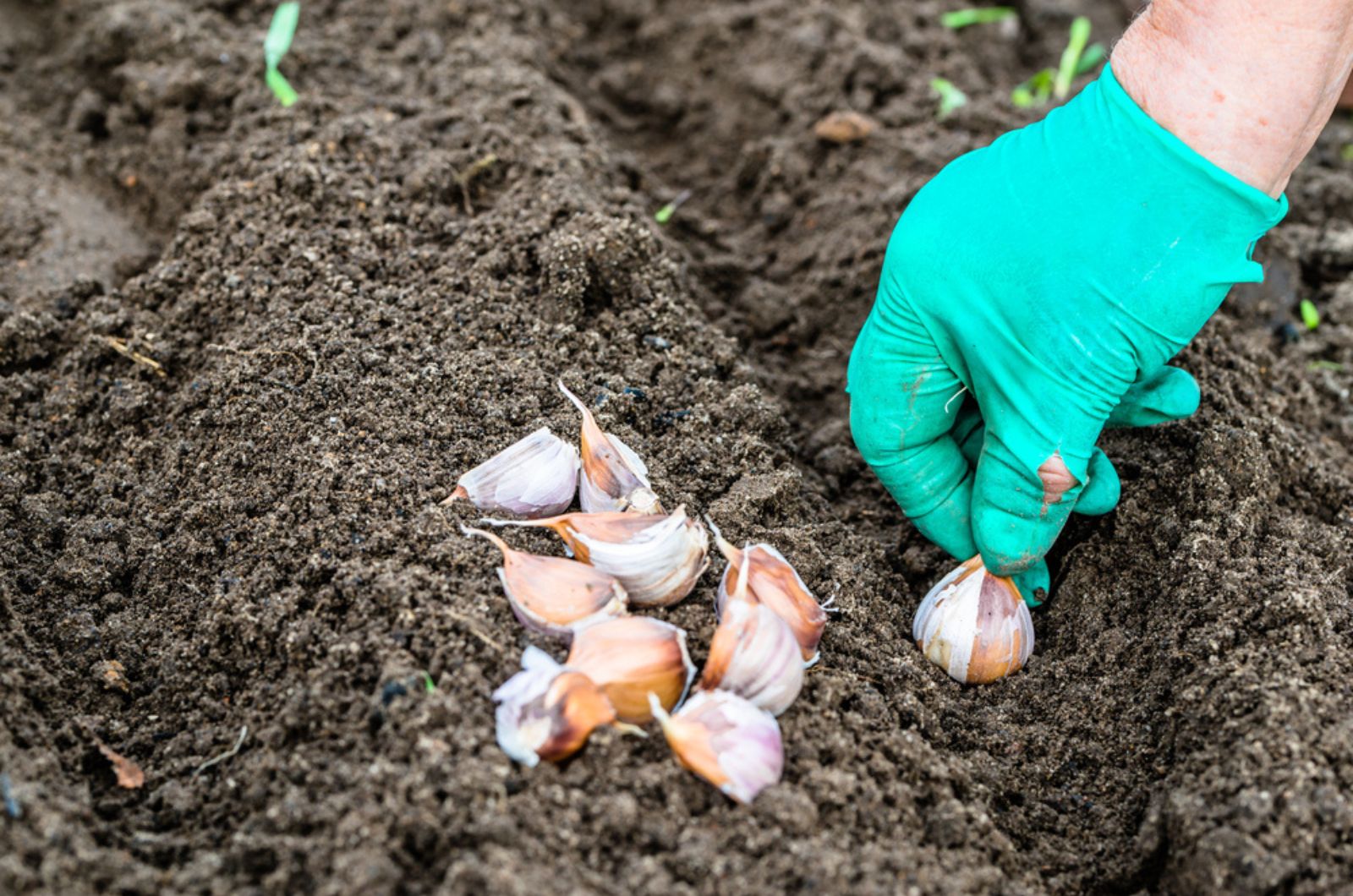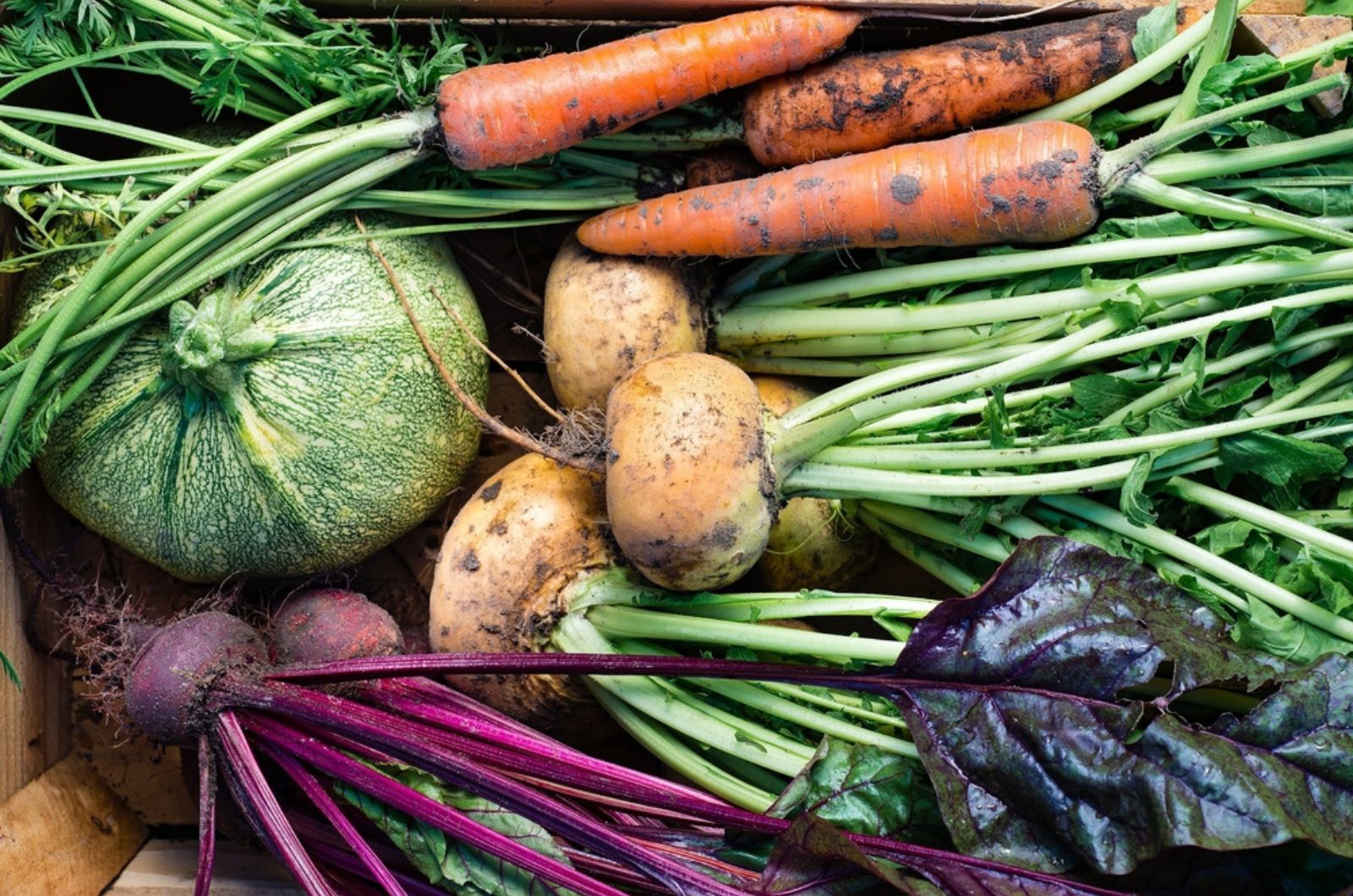Summer has just begun, so why am I here talking about shifting to a fall garden? Most of us are still weeks from harvesting our first tomatoes!
But even though the end of summer is still months away, we have to start preparing for our fall gardens.
It requires careful planning when it comes to choosing which veggies to grow and where to plant them.
Here are some tips that can help you out!
When To Shift From Summer To Fall Veggies
One thing that can make your life a lot easier is looking at your garden as a big picture. And that means considering where your fall crop will go as you plant your summer veggies.
You need to sow fall vegetable seeds well before the summer ends and this method of planning ahead will allow you to do that without worrying about lack of space.
For instance, you should sow parsnip seeds from some time between April and June in order to have a fall harvest. And if you want Brussels sprouts, you should plant them in June so that they have enough time to mature.
So what to do if you don’t have enough space for fall plantings?
It’s time to look at your summer crop and see what needs to go away. It’s hard to say goodbye to tomatoes, peppers, and eggplants, which keep producing fruit over and over again.
But peas and radishes are a different story. You’ll notice they’re mostly spent after some time, so it’s a good idea to remove them and prepare the soil for fall plantings.
You can also pull out any summer crops before the harvest if they’re not doing that well. It’s much better to invest your time and energy into setting the foundations for fall crops than wasting it on summer veggies that may yield 1-2 fruits max.
Basic Plants To Grow
Think about the veggies you’ll be needing the most in winter and early spring, such as onions, carrots, parsley, and celery.
These four veggies are my go-to ingredients for any soup, stew, or roast I’m preparing during the winter months. And it feels rewarding to harvest most materials you need from your garden (not to mention a more savory flavor).
Carrots generally don’t take long to grow, but they will need more time to mature in fall because there is less sun exposure. Fortunately, they overwinter well in the ground, explaining why the farmer’s markets are full of them all year round.
You can also plant celery and parsley in the summer. They are biennials and can survive winter in warmer regions (zone 7 and above).
However, if you notice that some of your plants have started to produce flowers (bolt), pull them out and plant new ones in the fall.
At this stage, the plants will set seeds and wither away. You can also leave a couple of plants if you want to harvest the seeds for next year’s plantings.
Finally, don’t forget about onions. Plant them either from bulbs or seeds, and reseed them every two weeks for a fall harvest.
Another veg you should plant now is leeks (if you’re into this veg). Just know that they are long crops and you’ll only be able to harvest them the following spring.
Other Veggies You Can Add
I like to start my fall crops indoors and transplant them outside just as my summer veggies start going to seed.
Broccoli And Cauliflower
I love broccoli, so I get a couple of different varieties to grow. Resprouting ones are my favorite because they keep producing smaller heads after you harvest the main one.
Bolt-resistant broccoli varieties are a non-negotiable part of my fall crops because they make sure I’ll have delicious broccoli for my pasta and fish dishes (bolted broccoli is slightly bitter).
Of course, this combination of different varieties of the same veggies allows you to harvest them at different times, so you can enjoy them whenever you want.
And don’t think I forgot about cauliflower, which you can deep fry or add to soups. These veggies come in purple, white, and pale orange, bringing more color to your garden.
Add some romanesco broccoli (or cauliflower if you refer to it that way), and stun your friends when they come to your backyard parties.
Cabbage
Cabbage is one of the most cold-tolerant vegetables there is, so it makes sense to add it to your fall plantings.
Sow the seeds now, and enjoy them as wraps, in salads, roasted, in stews, stir frys, etc. Savoy, Napa, green, and purple cabbage are all great options.
But if you have trouble growing round cabbage varieties (which sometimes happens to me for no apparent reason), you can grow purple or green filderkraut. It is slightly sweeter than regular cabbage.
Greens
This is the time to plant cool-weather crops, such as leafy greens. Lettuce, Spinach, Swiss chard, bok choy, kale, collards, mustard greens – take your pick.
They won’t bolt and leave a bitter taste in your mouth, which makes them perfect fall crops.
Herbs
You will have to wait until next year to plant herbs if you don’t plant them some time soon. Most of them don’t tolerate harsh winters, so fall is your last shot of enjoying your own dill, cilantro, and parsley.
Root Vegetables
In fall and winter we shift from above to below-ground vegetables, such as root crops. It is the time for growing carrots, onions, turnips, beets, kohlrabi, and rutabagas.
The last four aren’t as popular as other vegetables you may grow, but give them a shot. They can be delicious if you prepare them correctly and bring more variety into your diet.
You can even use some of them as alternatives to cauliflower and potato mash or roast them for an easy dinner.
Don’t Forget About Garlic
If you planted garlic in early summer, you can look forward to a bountiful fall harvest.
However, most places in the US are harvesting it now. You have to plant garlic in the fall for an early-summer harvest, so don’t forget to get a couple of cloves.
And since this timing is anything but normal (a single veg takes almost a whole year to grow), you should devote a small plot solely to your garlic.
Leave a separate garden bed or a small patch in your vegetable garden for this allium when planting your fall veggies.
Turn Some Fall Veggies Into Cover Crops
One way to improve your garden soil is to grow cover crops and turn them into green manure. That means sowing seeds and cutting the plant down before fruiting. This method will enrich the substrate and prepare it for next year’s plantings.
Fava beans and field peas are the most popular choices, but you can also use driller radishes. This radish will burrow into your soil, loosen it up, and later enrich it with nutrients, creating a perfect environment for various vegetables.
Where To Purchase Fall Vegetables
There are many places you can get fall veggies, and one of them is your garden. Not literally, though – I’m talking about seeds.
Leave some plants to set seeds, harvest them, and you’ll save money the following year.
Another way is to buy seed packets in garden centers. They’re much cheaper than transplants.
However, seeds take longer to develop into mature plants, so bear that in mind when planting. You might need to sow them about 6 weeks before you transplant the young plants.
Luckily, you can always start seeds indoors and time your planting. That way, you won’t have to wait for them to germinate outdoors and start growing – you’ll have young transplants without spending too much money on them.
You can also get cover crops in garden centers and ask them for good localized options.





